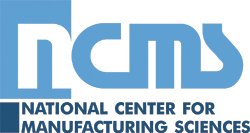Historical Articles
MONTHLY REVIEW
Published by the American Electroplaters Society
Publication and Editorial Office 3040 Diverecy Ave., Chicago
Vol. XIV MARCH, 1927 No. 3
EDITORIAL
From the columns of the Monthly Review we learn that the Great American Plater is going to school. Chemistry classes are being formed and the young plater, the middle aged plater and the old plater sit in class together and listen to the Professor of Chemistry explain the mysteries of his science.The older platers who have had years of experience handling men and are quite up on modern production methods can absorb their fill of chemical science and profit thereby. It will eliminate the guess work and cut and fit methods of maintaining solutions.
On the other hand guess work and rule of thumb practice have no part in modern production methods. The plater is manager of an important department and must know how to manage a working force, also have mechanical ability to develop short cuts to greater efficiency. So then the young man fitting himself for a plating foreman’s job, should not be misled into thinking that a job knowledge of metal disposition is the all essential thing needed. The plater is also a foreman among other foremen of the plant, a leader of his men and holds a strategic position between the management and the men.
E. W. Heil,
Associate Editor.
SILVER CYANIDE PLATING SOLUTION
F. H. Nordman
THEORY
The fundamental reactions in silver plating solutions when subjected to electrolysis are comparatively simple. The double potassium silver salt in solution is ionized according to the equation:KAg(CN)2 = K+ + Ag(CN)2- (l)
This primary ionization is undoubtedly accompanied by a secondary slight ionization of Ag(CN)2-.
Ag(CN)2- = Ag+ + 2 CN- (2)
The entire ionization reaction may then be stated:
KAg(CN)2 = K+ + Ag+ + 2(CN)- (3)
The free cyanide is ionized according to the following reaction:
KCN = K+ + CN-
On electrolysis the selective neutralization of the positive ions present is dependent upon the voltage impressed. That ion which is most easily neutralized will be deposited and will continue to be deposited as long as any of that type ion remains, provided the voltage impressed is such as to allow a selective neutralization of charge. Any voltage impressed that is sufficiently high as to allow the neutralization of the most difficult neutralizable ion will likewise effect the deposition of the two metals simultaneously. In the case of silver cyanide plating solutions, it is probable that the silver ion is the most easily neutralized and therefore one would expect the deposition of the silver molecule at the cathode without any change in the potassium ion present. At the cathode then the reaction is as follows:
Ag+ + (-) = Ag
At the anode, which in silver plating is silver, the CN- is neutralized by a positive charge.
2(CN)- + 2(+) = 2(CN)
The metallic silver anode is attacked by the liberated (CN) radical resulting in the formation of Ag(CN)2.
Ag + 2(CN) = Ag(CN)2
This compound is immediately ionized according to reaction (2), and the cycle of electrolysis repeats itself.
It would be well to consider here the first objection to the use of sodium cyanide in place of potassium cyanide, namely, that of causing increased “spotting-out” and difficulties in burnishing. Although the question of spotting-out has not been systematically investigated, the general opinion is that this phenomenon may be attributed to the occlusion of cyanide in the pores of the plate. With inefficient washing these cyanides remain in the pores, and being deliquescent attract moisture and corrode the base metal. If spotting out is more pronounced with the use of sodium cyanide, the most logical conclusion is that the deposits from sodium cyanide baths possess a physical structure different from deposits obtained from potassium cyanide baths.The factors that ultimately affect the type of deposit obtained may be classified as follows:
1. Current density.
2. Temperature.
3. Metallic ion concentration.
4. Type of metal deposited on.
5. Presence of colloids, etc.If the current density, temperature, base metal, and type of solution are maintained constant, the only difference in the physical structure of the deposit would seem to be due to different metallic ion concentrations in the two solutions. The metallic ion concentration of baths of this type has never, to the writer’s knowledge, been determined. An examination of the deposits from a bath made from C. P. sodium cyanide and one made from C. P. potassium cyanide should show if there exists a difference in the metallic ion concentration, at least to the degree that affects commercial operation.
Inasmuch as commercial cyanides are not, in general, exceptionally pure, especially sodium cyanide, the effect on the character of the deposit of such impurities as chlorides, hydroxides and carbonates should be considered. Chlorides are often added to sodium cyanide to decrease the total cyanogen content to one hundred per cent potassium cyanide equivalent; hydroxides may be present from the original preparation; carbonates are formed as a decomposition product of cyanides exposed to air. An examination of the fundamental reactions, previously given, seems to indicate that, under given conditions of electrolysis there should be no difference in the type of deposit obtained in the presence or absence of these impurities. The only minor reaction that might take place would be between these salts and metallic silver; it is doubtful whether this is sufficiently great to affect the character of the deposit. Frary and Porter (2) investigated the effect of potassium chloride and potassium hydroxide on the simple potential of various metals used as cathodes. No appreciable different results were obtained in the presence of potassium chloride and potassium hydroxide. One would therefore expect no adverse effect on the type or adhesion of the deposit.
A theoretical examination of the fundamental reactions of electrolysis, previously stated, shows that regeneration of the bath should be unnecessary, since there occurs only dissolution and deposition of the silver. However, this is not the case. Decomposition of the free cyanide occurs with the formation of carbonates, formates, ammonia, etc. But little investigation as to the products and reactions of decomposition has been attempted, so that the reactions themselves are very little known. Theoretically, the three factors that may account for the decomposition of the solution are as follows:
1. Hydrolysis.
2. Presence of air.
3. Electrolysis.A resume of the literature shows that very little has been done to determine the proportion of decomposition that may be due to each of the above factors. Provided that these factors are equal in magnitude in the case of baths made from potassium cyanide and sodium cyanide, the rate of decomposition in each case would in all probability be the same.
The reactions of hydrolysis may be briefly stated as follows:
1. The potassium cyanide is hydrolyzed in neutral solution.
KCN + H2O = KOH + HCN
2. The hydrocyanic acid in the presence of an alkali and water breaks up, forming ammonia and formic acid.
HCN + 2 H2O = H2CO + NH3
3. In the presence of an alkali, the formate of the alkali is formed.
KOH + H2CO2 = HCOOK + H2O
The above reactions may be represented by a single equation which shows the hydrolysis of potassium cyanide.
KCN + 2 H2O = HCOOK + NH3
Worley and Brown (3) investigated the hydrolysis of sodium cyanide in connection with the dissolution of gold and found that at 20°C the value of the hydrolysis constant multiplied by 104 was equal to 0.27. To the writer’s knowledge, no work has been done on the hydrolysis of potassium cyanide solutions at ordinary temperatures. There is, therefore, no data available on which to base a determination of the different amounts of hydrolysis of free sodium and potassium cyanides in cyanide plating solutions.
The presence of such impurities as chlorides and carbonates should have no effect on the extent of hydrolysis. Hydroxides would decrease it due to the common ion effect.
Many practical discussions on electroplating note that the formation of the carbonates in silver cyanide plating solutions is probably due to the absorption of carbon dioxide from the air. Jordis and Stramer (4) noted that a silver cyanide plating bath, when not being used, increased in carbonate content on standing in contact with air. A number of authorities on general chemistry mention the fact that when moist air comes in contact with potassium cyanide, potassium carbonate is formed and hydrocyanic acid gas is liberated. One would, therefore, conclude that in the presence of air, the plating solution would take up carbon dioxide, with the subsequent removal of two molecules of potassium cyanide for the formation of one molecule of carbonate.
2 KCN + H2CO3 = 2 HCN + K2CO3
Atmospheric air might have an oxidizing action on potassium cyanide, forming potassium cyanate, and this on hydrolysis would yield potassium and ammonium carbonates.
2 KCN + O2 = 2 KCNO
2 KCNO + 4 H2O = (NH4)2CO3 + K2CO3Thus for every two molecules of cyanide decomposed there should be formed two molecules of carbonate.
The effect of impurities such as chlorides, carbonates, and hydroxides on the decomposition of cyanide due to the presence of air may now be noted. Theoretically there is no apparent reason why chlorides should have an effect on the rate of decomposition. Hydroxides might aid in the absorption of the carbon dioxide from the air, giving an increase in carbonic content, without the same proportional increase in the decomposition of the cyanide.2 KOH + H2CO3 = K2CO3 + H2O
The presence of carbonates should have no decided effect on the decomposition of the cyanide.
Jordis and Stramer (4) also noted that the decomposition of the free cyanide in a silver- cyanide plating solution was greater when the solution was being electrolyzed than when it was idle. Just why this decomposition would be different in a bath in use is not at once apparent. The reactions of electrolysis have been previously stated. Theoretically, there seems to be no explanation of why the decomposition should increase on electrolysis. However, when the mechanical details of electrolysis are investigated, the loss of KCN may be accounted for. For instance, the silver anode is hung on an iron wire, which extends into the solution. There is therefore every possibility of the liberation of the (CN)2 radical where it cannot attack the silver; it perhaps does not attack iron, so that it is liberated. It might combine with any base present to form the cyanide and the cyanate according to the equation:(CN)2 + 2 KOH = KCN + KCNO + H2O
The cyanate might then be hydrolyzed, according to the reactions given above, to produce ammonium and potassium carbonates. This decomposition would not decrease the free cyanide content; it would however result in the format on of carbonates at the expense of the decrease in the combined cyanide present.
Then, too, if the voltage was such as to cause the neutralization of a potassium ion simultaneously with the deposition of silver, the effect would be the electrolysis of potassium cyanide.K Ag (CN)2 = K+ + Ag+ + 2(CN)-
KCN = K+ + CN-The potassium, liberated at the cathode, would combine with the water present to form potassium hydroxide and hydrogen.
2K+ + 2H2O = 2KOH + H2
The (CN) liberated at the anode would attack the anode according to the reactions previously given. Such a series of reactions would result in the decomposition of free cyanide with the subsequent formation of a molecule of potassium hydroxide.
The presence of such impurities as hydroxides, carbonates and chlorides would tend to cause an oxidation reaction, similar to that caused by potassium cyanide provided the deposition voltage of the chloride, hydroxyl and carbonate ions was reached. Jordis and Stramer (4) noted that the formation of carbonates was greater when the cyanide plating solution contained chlorides than when it was free from chlorides. This can only be accounted for by assuming that such a voltage was being used that the deposition voltage of the chloride ion was reached. The oxidation reactions discussed above would then account for the increase in carbonate formation.
A consideration of the above reactions when comparing plating solutions made from sodium cyanide and potassium cyanide shows that there are few reasons why there should be any difference in the rates of decomposition. It may be noted here that sodium carbonate is much less soluble than is potassium carbonate, a fact that might have an influence on the reactions of carbon dioxide of the aid on the solution. On the equilibrium between carbonates and cyanides; also, (To be continued)
PITTSBURGH BRANCH
Our meetings that have recently been held in the Down Town Branch Y. M. C. A., Pittsburgh, have been very well attended, and much more interest is being shown by the members, and we all hope the good work continues. Last Saturday night we had a record number present and several questions came up for discussion, several members came with a sample of their nickel solutions, for testing for pH with the Double Wedge Comparator, and the range ran clear from one end of the scale to the other, and each member said that his OWN solution was right to standard and could not be improved Upon. Next meeting it is hoped the members will remember to bring more samples, when test will be made with the LaMotte Ion Comparator, when the results will be checked. The question of Saw Dust was brought up, and we found that none of the platers in the district were using this material for drying; other methods, such as hot air, ovens and other mechanical methods were the rule. One of the members had samples of copper, brass and nickel work to pass around, but would not answer any questions as to how the finish was obtained, just saying, match the work if you can, and make your samples better if possible, when at a later date a discussion will be had upon the various finishes and the methods used. This is, to my mind, a good way to see just what the platers will and can do, and ought to pave the way for some good talks later.
S. E. Hedden, Secy.
TOLEDO BRANCH
Hooray: Coming to 1927 Convention
Toledo, Ohio, the city selected for this year’s convention of the National Electro-Platers Association, to be held June 29 and 30 and July 1 and 2, is known as the Gateway City to the Great Lakes.
The city located on Maumee Bay and at the hand of picturesque and historical Maumee Valley, together with many beautiful parks and drives, make it an ideal and interesting city for the visitors. In the summer months palatial steamers give the visitor an opportunity for a refreshing ride on Lake Erie visiting historical Put-In-Bay and other interesting ports.
Toledo’s Museum of Art has become an art center of international reputation. Its collections of paintings, Egyptian antiques and glassware are world famous.
One of Toledo’s accomplishments and one in which they are justly proud of are the many beautiful schools.
Toledo has thirteen parks, three public golf courses and in addition seven private golf courses and five yacht and canoe clubs, affording a diversion of recreation for its visitors.Toledo is internationally known for its wonderful railroad transportation facilities with seventeen main lines and seven branch lines reaching out to all sections of the country, 116 express trains enter and leave Toledo daily. In addition to the railroad transportation the large lake freighters are arriving and leaving constantly during lake shipping season. Toledo is the soft coal port of the United States, over fourteen million tons of coal were shipped from Toledo ports last year.
Toledo has in the neighborhood of 700 factories of a diversified nature producing over 1,200 different articles.
Situated in the center of a thickly populated district with ready transportation to a number of the nation’s leading cities the question of distribution does not trouble Toledo manufacturers.Toledo is the largest children’s vehicle manufacturing center in the country. The Gendron Wheel, American Wheel and Toledo Metal Wheel, manufacturers of the various kinds of children’s vehicles, are among the foremost manufacturing concerns in the city.
One of the outstanding features assuring amicable working conditions is a matter of home ownership. Practically 50 per cent of Toledo’s population own their own home, which tends to make a more satisfactory condition to the life of a city.
DETROIT BRANCH
Regular monthly meeting of the Detroit Branch held March 4th, at the Detroit Testing Laboratory, with President J. Flanagan in the chair and a good attendance.
One applicant was elected to active membership. Also received one member from Cleveland Branch and transferred one to the Chicago Branch.
General discussion was regarding a chemical class, the committee having reported they would have an answer as to whether the Cass Tech. would be available for us on about Monday next, when a report would be had from the Board of Education. It was decided that as soon as the committee received an answer, if favorable, the Secretary should send out notices to all the members and definite steps taken at a special meeting to express their views.
Mr. Barber, one of the oldest members of the society from Bridgeport Branch, gave a most enjoyable talk. His subject being, The Use of the Amp meter as a Means of Determining the Weight of Deposit from Solution.
C. Mascola, Secy.
DAYTON BRANCHDayton Branch held its monthly meeting March 5th at Y. M. C. A. building. We had a fine gathering of the members.
The speaker of the evening was C. E. Vanderan of Westinghouse Electric Manufacturing Co.. at Mansfield, Ohio, who gave us a lecture on Chrome Plating as it is done in production, also exhibited samples of this work, which was best we have seen, and the lecture sure was instructive and very well handled by Van, who has the knack of bringing out the smallest details of these explanations and it sure is a pleasure to have him with us, and any Dayton members who were not there sure missed a real treat and we hope Van will call again soon and make his visits many.
The question box was full and many topics were discussed and we adjourned at a late hour.
Robt. G. Suman, Secy.
Banquet Notice
Newark Branch will hold its ninth annual banquet at Achtel-Stetter’s. 842 Broad street, Newark, on Saturday, April 30, 1927. Afternoon educational session beginning at 3 p. m. Banquet 7 p. m., followed by dancing. Ladies are expected to attend as usual. Tickets $3.00 per person.Newark Branch held its business meeting on Friday evening, February 18, 1927, with twenty-one members present. President Geo. Onksen presiding.
Minutes were approved as read. One application for associate membership was voted to take the usual course. Banquet committee report progress on our banquet, which will be held on April 30th.
Librarian Calabrese reported that he was quite sure he will secure a paper to be read at the Toledo convention.
Royal F. Clark, Secy.-Treas.
CHICAGO BRANCH
Regular monthly meeting, Chicago Branch, held March 12, 1927, at the Atlantic Hotel.
The meeting was called to order with President Jacob Hay presiding, and a very good attendance.
President Hay called the attention of the members to the joint meeting of the American Chemical Society and the American Electro Platers’ Society, same to be held at the City Club, 315 Plymouth Court, Friday, March 25, 1927, at which Dr. Wm. Blum will speak on Research on Electro Plating Solutions.
Mr. Oscar E. Servis, our librarian, called upon the members for papers for the Toledo convention and was promised a few; he also called attention to the Research Fund Drive.
The Booster Committee for the coming convention reported that there would be a good attendance from Chicago.
The balance of the evening was given over to our Librarian, who found the following questions:
R. Meyers, Secy.
Question Box Chicago Branch
Question 1.—Wanted information on ball burnishing iron and steel. What is a good soap or other agent to use for the burnishing operation?
Answer 1.—Lux Soap Chips was recommended as a good soap, same to be followed by a 10 per cent muriatic acid dip before work is plated.
Question 2.—Is there any other bright dip other than acid dip on sheet brass ?
Answer 2.—A dip made up of 10 ounces of potassium bichromate, sulphuric acid 3 to 4 ounces, water 1 gallon. Temperature 175 or more was given.
Question 3.—How can aluminum sheets be etched so as to produce a fairly rough surface?
Answer 3.—Muriatic acid with a small addition of chloride of iron.
Question 4.—What is a good brightener for a cyanide copper solution?
Answer 4.—Nickel cyanide, lead carbonate cut down with caustic soda, liver of sulphur and hypo was suggested.
Question 5.—Can copper be plated on chromium?
Answer 5.—It was stated that it cannot be done.
Question 6.—How can spotting out on sheet brass copper plated and oxidized with liver of sulphur for statuary bronze?
Answer 6.—Acid copper plate followed by a black nickel made up as follows: 8 ounces single nickel salt, 2 ounces sulpho cyanide, 3/4 ounce zinc sulphate, 1/2 ounce sal ammoniac.
Question 7.—What is the proper way of introducing chromium sulphate into chromic acid when preparing a new chromium solution?
Answer 7.—Will anyone answer this.
 |
 |
 |
 |
 |
| Home | Subscribe | Regulations | Compliance Assistance | News | Resources | Resource Locators | Directories | Online Training | About | Search | NASF.org |
The information contained in this site is provided for your review and convenience. It
is not intended to provide legal advice with respect to any federal, state, or local regulation.
You should consult with legal counsel and appropriate authorities before interpreting any
regulations or undertaking any specific course of action.
Please note that many of the regulatory discussions on STERC refer to federal
regulations. In many cases, states or local governments have promulgated relevant rules and
standards
that are different and/or more stringent than the federal regulations. Therefore, to assure full
compliance, you should investigate and comply with all applicable federal, state and local
regulations.

